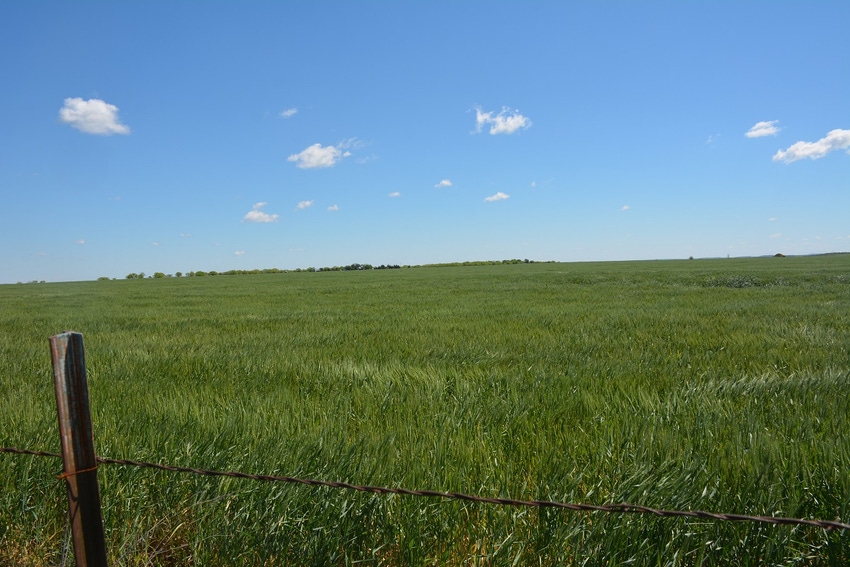
Lower production and a quality wheat crop could result in Oklahoma and Texas wheat harvest prices being in the $4.00 to $4.24 range. To achieve $5.00 or higher, prices will require 2017/18 foreign wheat production to be about 10 percent less than in 2016/17. Current projections are for a 4 percent to 6 percent reduction.
April 5, 2017

Timely rain over the hard red winter (HRW) wheat area has improved crop conditions and production expectations. Offsetting these rain-induced production expectations is fewer planted acres, which may result in significantly lower production than last year.
For the reporting period March 27-April 2, 2017, Oklahoma’s wheat crop condition improved from 37 percent good-to-excellent to 41 percent. Texas’ wheat crop condition percentage good-to-excellent increased from 34 percent to 39 percent, and the Kansas crop condition increased from 38 percent to 47 percent good-to-excellent.
The April 4, 2016 Crop Condition Report indicated that the good-to-excellent percentage was 61 percent for Oklahoma, 39 percent for Texas, and 43 percent for Kansas. Oklahoma’s 2016 crop condition was significantly better than the 2017 rating. Kansas’ conditions are slightly better, and Texas’ wheat conditions are about the same as last year.
Note that, depending on rain, temperature, and wind, crop conditions and potential production will either improve or decline between now and harvest.
SIGNIFICANTLY LOWER PRODUCTION
2017 HRW wheat planted acreage is estimated to be 23.8 million, which is 12 percent lower than 2016. Lower planted acres should result in significantly lower 2017 HRW wheat production.
Another factor that needs to be considered is that 2016 wheat yields were at record, or near record, levels. Current crop conditions, which are lower than last year, imply that yield per acre will be less than the 2016 record yields. The result is that 2017 HRW wheat production is expected to be about 800 million bushels, compared to 1.05 billion bushels in 2016.
Lower production will be beneficial for prices, but the benefit may be more than offset by higher beginning stocks and foreign wheat production and stocks. A 7 percent decrease in U.S. wheat production is needed just to offset the increase in U.S. stocks in the bin at the beginning of the 2017 harvest and marketing year.
STOCKS MUST DECLINE
For wheat stocks (supply) to decline to the five-year average, 2017 U.S. production would have to be below 1.9 billion bushels. Production in 2016 was 2.3 billion bushels, which implies a needed 17 percent reduction in production.
For wheat prices to improve, HRW and U.S. wheat stocks must decline. Lower planted acres and crop conditions may offset timely rains, and result in lower stocks in 2017/18 than during 2016/17.
Another beneficial 2017/18 price factor is that a large percentage of the wheat in storage is of relatively low quality. This situation implies that, as long as the 2017 wheat crop is of good milling quality, the market will buy it, and prices will be above current levels.
Lower production and a quality wheat crop could result in Oklahoma and Texas wheat harvest prices being in the $4.00 to $4.24 range. To achieve $5.00 or higher, prices will require 2017/18 foreign wheat production to be about 10 percent less than in 2016/17. Current projections are for a 4 percent to 6 percent reduction.
Rain does make grain, and it is needed to produce a quality product. But lower planted acres will limit how much grain can be produced, and quality will be a large determinant of price.
About the Author(s)
You May Also Like





